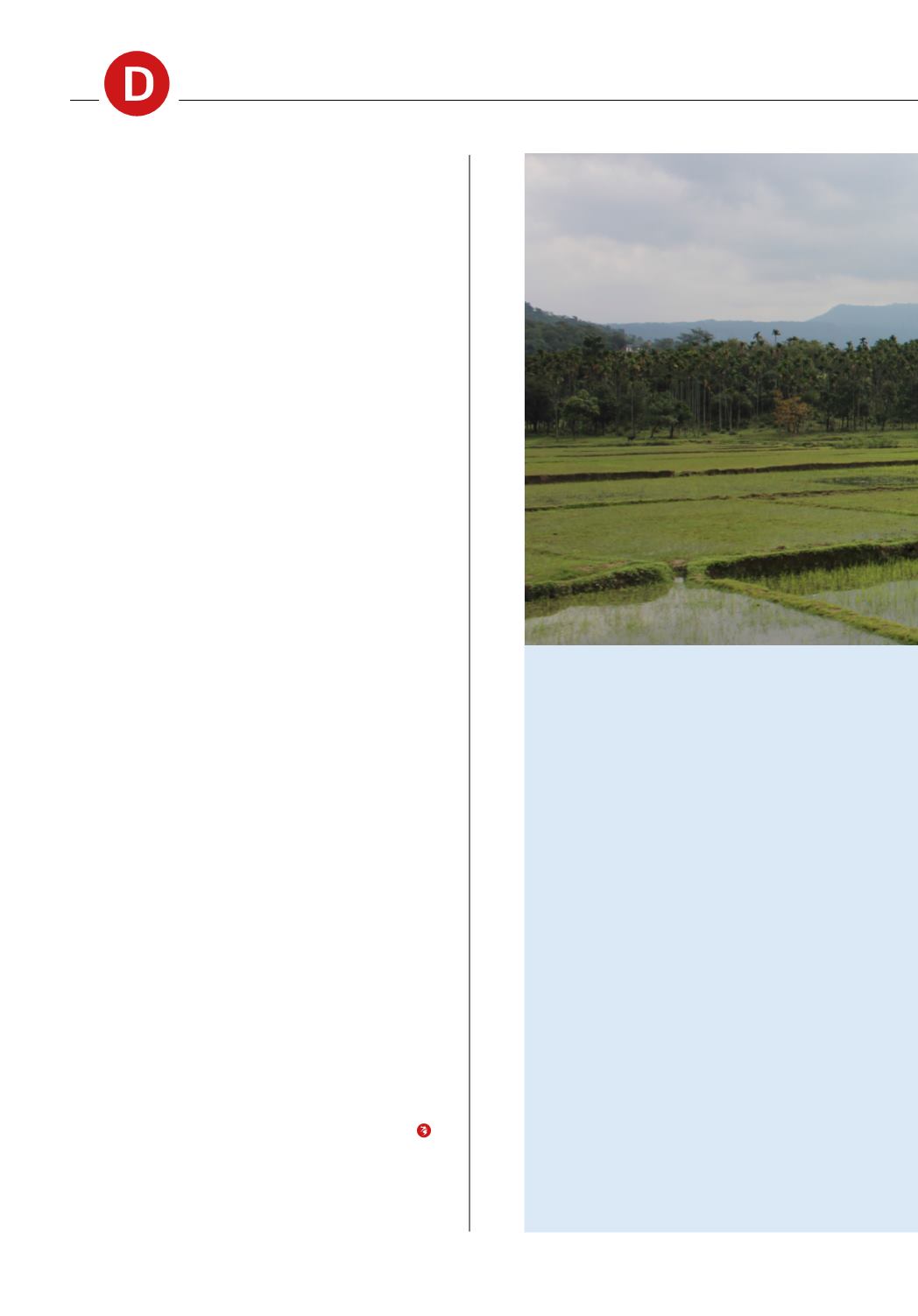

sharply. That is why the Great Garuda dam is now being built
offshore. The dam is an enormous investment but combining
it with land reclamation for the expansion of the city and a
ring road means that the project is still economically viable.
The Dutch Delta Programme combines flood risk management
with freshwater supplies and also contributes to spatial
development and the strengthening of the regional economy,
integrating flood risk management in the overall development
of an area.’
To what extent does the type of measure play a
role here?
‘That’s another thing you have to consider. On the one hand,
you have low-regret interventions that are useful for several
reasons, that can be applied flexibly when necessary, and
that do not cost a great deal. On the other hand, there are
interventions that require major investments and that are
inflexible in the sense that they will be in place for decades to
come. Climate change means that showers will become more
frequent and heavy, causing local flooding. You can prevent
that by making changes to the drains, but that does mean
that you have to dig up roads. On top of that, drains have a
lifetime of 50 or 60 years and so you won’t want to be doing
that every five years. A more flexible alternative is to stop the
rain being drained away as quickly by means of green roofs
and gardens, or open car parks, or by allowing more water to
be stored temporarily in cities in wadis and water squares.
When it comes to coastal defences, it is worth considering
forebanks or mangrove forests as an alternative to dikes and
dams, or combining functions by, for example, integrating a
car park in a dike.’
The difficulty remains that you have to know
the right steps to take, and when. How do you
go about that?
‘You can’t improve administrative and policy flexibility
without a system for monitoring developments. You also
need to be constantly asking whether the current strategy
for water management is still effective given the various
scenarios for climate change, and for democratic and socio-
economic developments. If it isn’t, we say that a tipping point
has been reached: the point at which we have to conclude
that one strategy is no longer adequate and that it is time
to take additional measures to prevent damage. In that
way, administrators and society as a whole can respond as
effectively as possible to the unpredictability of the climate
of the future, and to other natural and social changes.’
For more information:
ad.jeuken@deltares.nlHow does climate adap
tation work in practice?
Consultants William
Oliemans and Herman
van der Most talk about
their work in Bangladesh
and Thailand. ‘Climate
adaptation is not just a
one-off exercise.’
BY JOOST VAN KASTEREN
Senior ground and water
consultant WilliamOliemans
is working on Bangladesh’s
Delta Plan.
‘Bangladesh is the world’s largest and
most densely-populated delta. Rivers and
floodplains account for approximately
eighty per cent of the surface area of the
country and they are essential to feed the
FLEXIBLE
BANGLA
Bangladesh, photo: Lydia Cumiskey.
12
DOSSIER
CLIMATE ADAPTATION
DELTARES, SEPTEMBER 2015



















